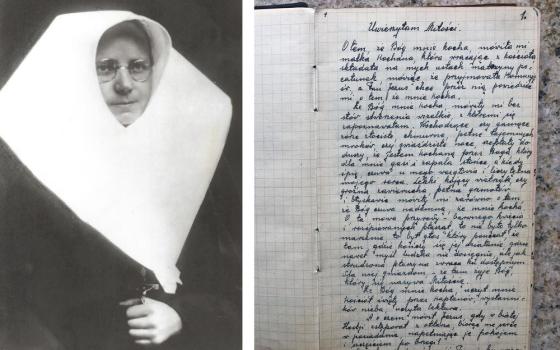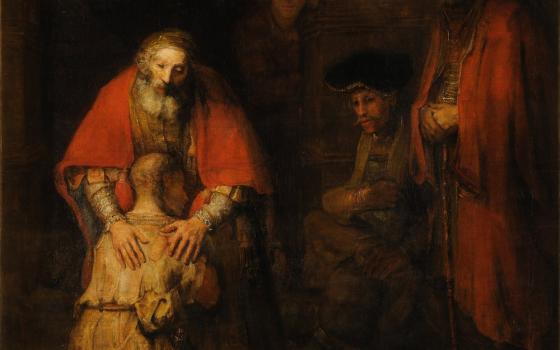Last week when the Vatican issued its approval for washing women's feet, I had been researching women faculty at Catholic seminaries. What will help church officials move away from their myopic gaze on women's body parts to a vision of their full humanity? It seems part of the solution may be in the classroom.
It turns out that Catholic seminaries employ few full-time women faculty to train the next generation of priests. I looked at official seminaries used by the four largest Catholic arch/dioceses in the United States (Boston, Chicago, Los Angeles, New York). Among these schools, women represent only 10 to 17 percent of faculty.
Perhaps not surprisingly, the most common disciplines for which these women faculty have been hired are music, languages, and library services. Among the seminaries I studied -- St. John's Seminary (Boston), Mundelein Seminary (Chicago), St. John's Seminary (Camarillo, Calif.) and St. Joseph's Seminary Dunwoodie (New York) -- I did not find one woman who taught systematic theology. I did not find that any offered a course on feminist theology.
Compare this to other Catholic graduate schools of ministry in the same geographical areas, and one finds 24 to 45 percent of full-time women faculty who teach a range of subjects: Boston College, Catholic Theological Union, Loyola Marymount University, and Fordham's Graduate School of Religion and Religious Education.
When I compared Catholic seminaries to other single-gender schools, it is clear that seminaries singularly lag behind other institutions in hiring and promoting a gender diverse faculty. In Boston, Wellesley College is 51 percent female, for example; Alverno Catholic Women's College has a 78 percent female faculty; in Los Angeles, Scripps College's faculty is 59 percent female; and Barnard's is 62 percent female.
It led me to wonder, does it benefit male priests to attend seminaries with predominantly male faculties and male-only student bodies, particularly when they are preparing to minister in a women-majority church? What would happen if women were equally present in the seminary system?
I have yet to find a study that compares ministerial outcomes for male priests trained in single-gender seminaries versus coeducational institutions. But there is research that demonstrates the impact on male students when their single-gender institutions are transformed to coeducational learning environments.
Professor Leslie Miller-Bernal, a Wells College sociologist, and Professor Susan L. Poulson, a University of Scranton historian, edited the book Going Coed: Women’s Experiences in Formerly Men’s Colleges and Universities, 1950-2000. The collection of essays also sheds light on what happens to men who are trained in coeducational, residential environments.
When the West Point military academy went coeducational, male cadets initially resisted the change. Four years later, their attitudes toward their new female comrades had significantly improved. In fact, researchers noted that, "these changes in gender role attitudes at West Point occurred later than comparable attitudinal changes in the larger society, suggesting that the coeducation experience itself may have positively influenced the male cadets."
Miller-Bernal and Poulson note that "the transition to coeducation compels institutions, and those within them, to evolve. Closed-mindedness initially prevents many men from dealing with women as they actually are. ... As male cadets begin to accept female cadets, presumptions about women as a group are replaced with more flexible ideas about women as individuals."
I can't help but wonder if the same trajectory would be true for male priests who might study under women professors and alongside women students. While some of the seminaries I researched permit lay students to study certain courses as non-residents, the school's primary focus remains training men for the priesthood.
There will be naysayers against coeducation for priests, just as officials at the Virginia Military Institute (VMI) worried that women's presence on campus would destroy the fabric of the student body.
In fact, "Far from leading to the demise of the institution," wrote the authors, "the admission of women to VMI seems to have helped reinvigorate it." Enrollment grew by nearly 50 percent, the institution's ranking improved in U.S. News and World Reports, and even alumni giving increased.
At a time when some Catholic seminaries are struggling financially and seeking innovative ways to carry on their mission, it may be time for them to fully welcome more women professors and students or merge with similar coeducational institutions. Aside from finances, it's also simply the right thing to do.
Catholic Theological Union (CTU) in Chicago is an example of a coeducational environment that has successfully balanced gender among its faculty and student body. CTU is comprised of 45 percent women faculty and 41 percent women students. The institution serves lay women and men, in addition to women and men religious and diocesan priests.
Multiple studies have shown that diversity within an institution spurs innovation and often increases growth. Other studies reveal that men's meaningful interactions with women often reduce stereotypes and increase generosity.
Meaningful connection between genders during ministerial training is part of what the church needs in order to evolve into a more inclusive and sustainable church over time.
While I appreciate that the Vatican has caught up with Catholic parishes in approving priests to wash women's feet on Maundy Thursday, I am more concerned about how women are treated the other 364 days of the year.
The Vatican may not be ready to recognize women's ordination or equality yet, but we can work to ensure that seminaries employ and educate both genders. Over time, church officials may finally start issuing policies and treating all its members as Jesus would: equally.
Editor's note: We can send you an email alert every time a Young Voices column is posted to NCRonline.org. Go to this page and follow directions: Email alert sign-up.



